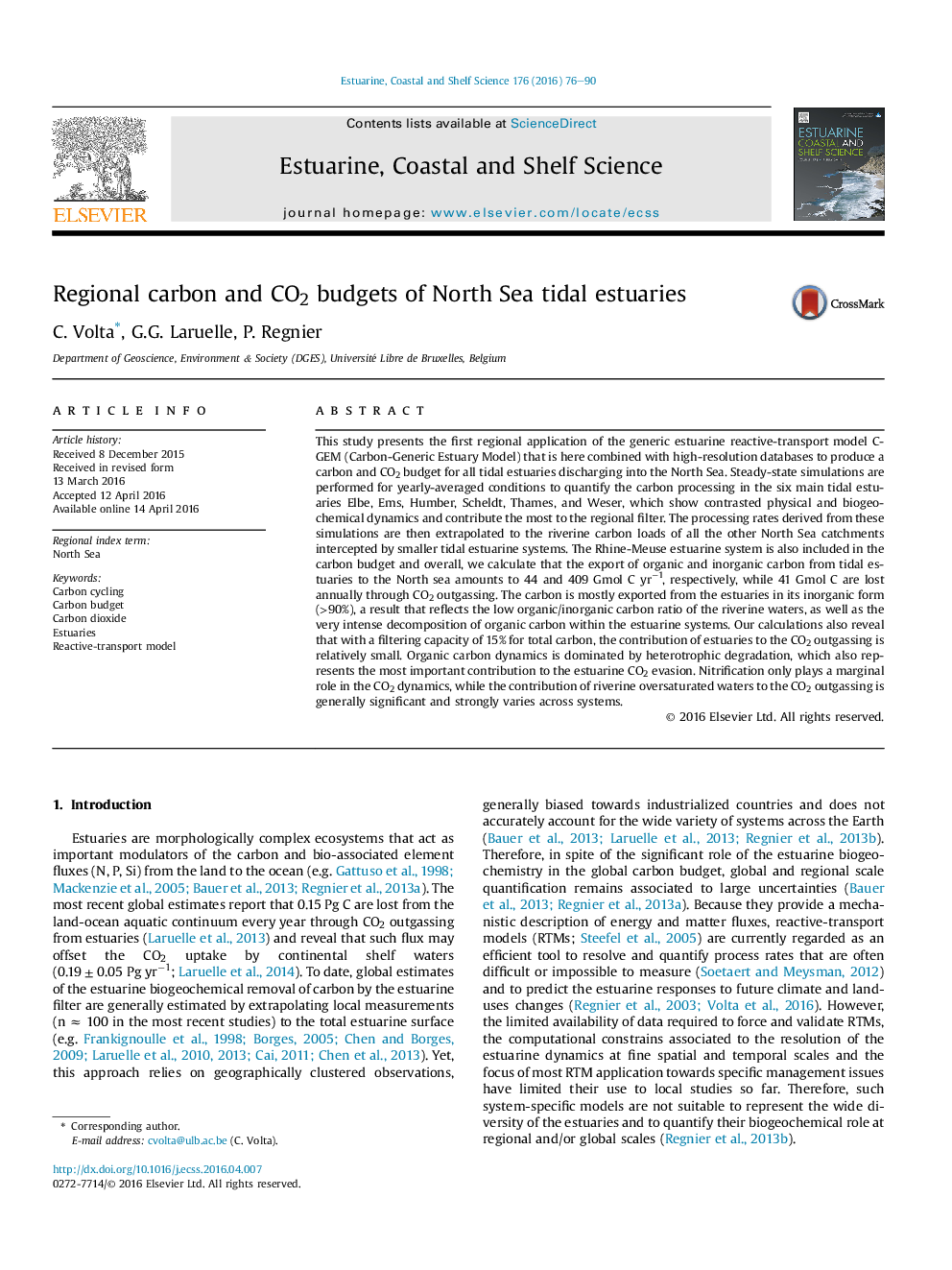| کد مقاله | کد نشریه | سال انتشار | مقاله انگلیسی | نسخه تمام متن |
|---|---|---|---|---|
| 4539267 | 1626623 | 2016 | 15 صفحه PDF | دانلود رایگان |

• First estuarine carbon budget at regional scale estimated by a RTM approach.
• Regional estuarine organic carbon filtering capacity is high (i.e. 76%).
• Regional estuarine total carbon filtering capacity is low (i.e. 15%).
• Regional OC:IC ratio reflects the drainage of carbonate-rich catchments.
• Contribution of oversaturated riverine waters to the CO2 dynamics can be large.
This study presents the first regional application of the generic estuarine reactive-transport model C-GEM (Carbon-Generic Estuary Model) that is here combined with high-resolution databases to produce a carbon and CO2 budget for all tidal estuaries discharging into the North Sea. Steady-state simulations are performed for yearly-averaged conditions to quantify the carbon processing in the six main tidal estuaries Elbe, Ems, Humber, Scheldt, Thames, and Weser, which show contrasted physical and biogeochemical dynamics and contribute the most to the regional filter. The processing rates derived from these simulations are then extrapolated to the riverine carbon loads of all the other North Sea catchments intercepted by smaller tidal estuarine systems. The Rhine-Meuse estuarine system is also included in the carbon budget and overall, we calculate that the export of organic and inorganic carbon from tidal estuaries to the North sea amounts to 44 and 409 Gmol C yr−1, respectively, while 41 Gmol C are lost annually through CO2 outgassing. The carbon is mostly exported from the estuaries in its inorganic form (>90%), a result that reflects the low organic/inorganic carbon ratio of the riverine waters, as well as the very intense decomposition of organic carbon within the estuarine systems. Our calculations also reveal that with a filtering capacity of 15% for total carbon, the contribution of estuaries to the CO2 outgassing is relatively small. Organic carbon dynamics is dominated by heterotrophic degradation, which also represents the most important contribution to the estuarine CO2 evasion. Nitrification only plays a marginal role in the CO2 dynamics, while the contribution of riverine oversaturated waters to the CO2 outgassing is generally significant and strongly varies across systems.
Figure optionsDownload high-quality image (391 K)Download as PowerPoint slide
Journal: Estuarine, Coastal and Shelf Science - Volume 176, 5 July 2016, Pages 76–90